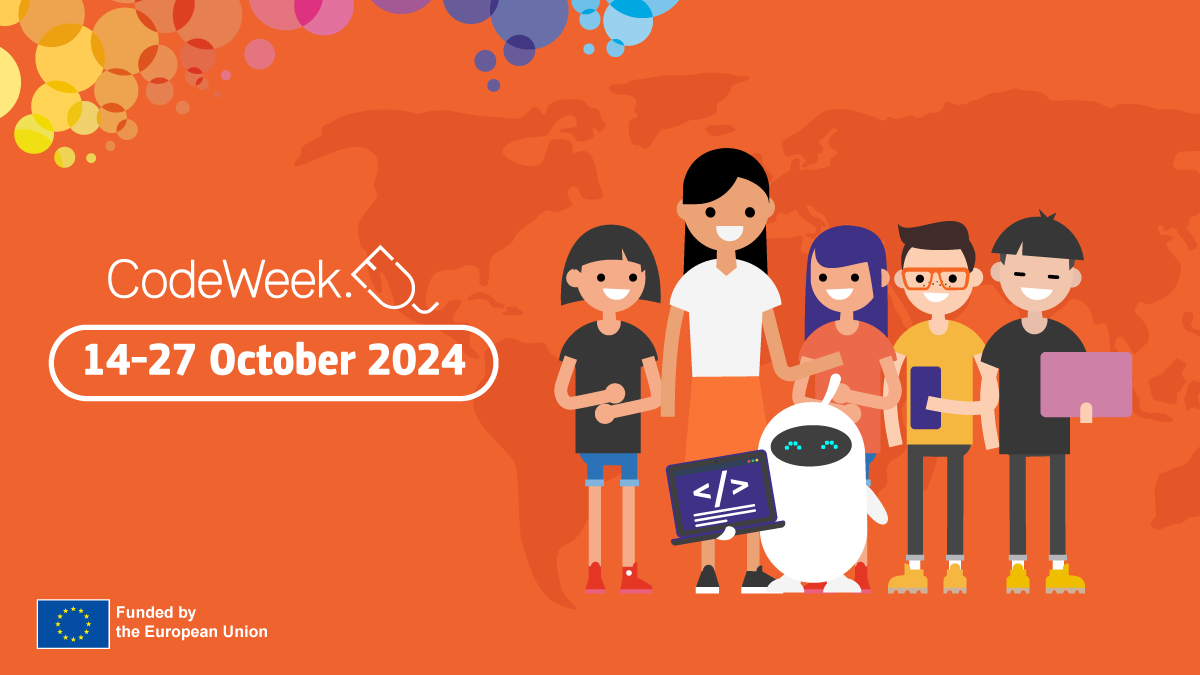Get Your EU Code Week Activity Ready to Pin in 6 Easy Steps
Publication date: May 27, 2024
In a way, every week is EU Code Week, so it’s time to get your coding activities ready and pinned on the map! Whether you’re a teacher, a student, a parent, or simply a coding enthusiast, organising and registering your event can be done quickly and efficiently. Here’s a short six-step guide to help you prepare and pin your activity with ease.

Step 1: Gather Your Group
First things first, assemble a group eager to dive into the world of coding. This could be your students, colleagues, friends, or family members. Remember, two people are already a group! Find a teacher or coach to guide the activity. They don’t need to be coding experts – just enthusiastic and willing to help. Choose a venue that works for you, whether it’s a classroom, library, or even your living room.
Step 2: Choose the Right Format
Decide on the format of your activity. Will it be a hands-on session with physical hardware, or an unplugged activity using paper and pens? Incorporate practical sessions where participants can experiment, make mistakes, and learn by creating their own projects. Encourage everyone to present their creations at the end to celebrate their achievements and learn from each other.
Step 3: Utilise Tools and Resources
Take advantage of the vast array of free resources available to make your activity a success. EU Code Week offers tutorials, training sessions, and coding challenges in 29 languages. Use open-source materials from the EU Code Week repository, where you can filter resources by type, skill level, programming language, and more. If you have limited space available at your venue, you can use online tools such as Google Forms and Eventbrite to register participants.
Step 4: Register Your Activity
Now that your activity is organised, it’s time to pin it on the EU Code Week map! Here’s how:
- Visit the EU Code Week website: Go to the website and navigate to the ‘Add Activity’ section.
- Fill in the details: Provide as much information as possible about your activity, including the title, description, date, location, and the age group of participants.
- Submit: Once you’ve filled out all the necessary fields, submit your activity to get it listed on the map.
Step 5: Spread the Word
Promote your activity to reach a broader audience. Use social media to share your event, and don’t forget to include the #EUCodeWeek hashtag. Join the EU Code Week Teacher’s group on Facebook or follow @CodeWeekEU on Instagram and X (Twitter) to share your experience and connect with other organisers.
Step 6: Celebrate and Share
After your activity ends, report it on the EU Code Week website. You can then download and personalise certificates for all participants. Finally, share your success with your community to inspire others. Post about your activity on social media and join the conversation in the EU Code Week groups to keep the momentum going.
The EU Code Week community can also share their experiences and activities in the blogpost, by contacting info@codeweek.eu
By following these simple steps, you’ll be ready to make the most of EU Code Week.
Happy coding, and we can’t wait to see your activities pinned on the map!

